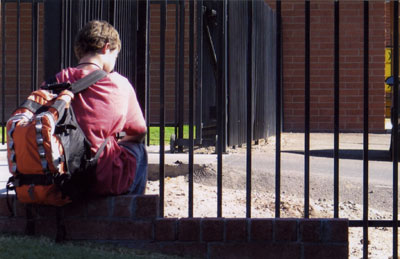All Nonfiction
- Bullying
- Books
- Academic
- Author Interviews
- Celebrity interviews
- College Articles
- College Essays
- Educator of the Year
- Heroes
- Interviews
- Memoir
- Personal Experience
- Sports
- Travel & Culture
All Opinions
- Bullying
- Current Events / Politics
- Discrimination
- Drugs / Alcohol / Smoking
- Entertainment / Celebrities
- Environment
- Love / Relationships
- Movies / Music / TV
- Pop Culture / Trends
- School / College
- Social Issues / Civics
- Spirituality / Religion
- Sports / Hobbies
All Hot Topics
- Bullying
- Community Service
- Environment
- Health
- Letters to the Editor
- Pride & Prejudice
- What Matters
- Back
Summer Guide
- Program Links
- Program Reviews
- Back
College Guide
- College Links
- College Reviews
- College Essays
- College Articles
- Back
Bullying: Cause and Effect
You may ask how big of a problem teen bullying is in the United States. First, Some people think the problem is not severe enough to take initiative. Second, bullies tend to pick on people based on only their cover. In my opinion peer victimization is not a huge problem unless the supervisors don’t have a way of preventing the issue. I have noticed bullying is more prone to happen in bigger schools because there aren’t enough teachers to be standing around influencing the children to not bully others. Because of the lack of supervision bullies find an easy target and either call them names, tease, push, shove, and taunt the victim.
If a teen is being picked on adults should try and help them immediately because little things wiggle their way into the victim’s brain and stick there like super glue. If the problem is not addressed properly serious incidents can lead to the victim committing suicide. These incidents show how effective an anti-bullying system could have helped stop the bullying from even going as far as making the victim want to kill themselves. Studies have shown when schools start an effective anti-bullying program the amount of students being bullied went down 63% (Morgan 177). Morgan’s evidence proves when an effective program is put in play the bullying is under more control, thus resulting in significantly less suicides. Although, when a bullying program is not set up correctly the system can backfire and lead to more bullying. Bullying is also likely to get worse if when a student is bullied the supervisor doesn’t handle it correctly, or not all of the staff in the school are using the program correctly. An effective bullying program should include, rules relating to bullying and make sure they are strictly enforced and clear to the students, the students should also have someone who they are comfortable talking to. Authority figures should emphasize their power while still giving the students respect, the parents should also be informed if the teacher sees their child being bullied or their child is bullying another child in any way (Morgan 177).
Believe it or not different people are bullied in different ways. In the bully's eyes some students are easier targets than others for example smaller students appear to be easier to hurt, emotionally or physically than bigger students. Gays and lesbians are also targeted by bullies. Targets who become victims can be beat up with words and hits, to the bully words seem to be more effective to the victim's emotional state, which results in the victim being more afraid of the bully. When students are focused on being scared of what the bully might do next they tend to stop paying as much attention in class leading to significantly lower test scores. As I said earlier different bullies use different strategies. With the different types of bullying comes different reactions to the bullying. It is shown after males are bullied they are more likely to start drinking alcohol to relieve the pain the bully had caused. Females on the other hand are more likely to start acting more aggressively and emotional to her peers (Conoley 218).
Bullying certainly is a problem if it is not handled with care. Bullying can be contained in most cases, but in all cases it can be stopped even before the problem arrises. In my opinion bullying is an issue more schools should take the time to help prevent the problem by creating a helpful program to help work against bullying, by using a program all schools will eliminate the bullying problem by 63%. So do your part and use an effective program at your school.
Works Cited
Conoley, Jane Close. "Sticks And Stones Can Break My Bones And Words Can Really Hurt Me." School Psychology Review 37.2 (2008): 217-220. Psychology and Behavioral Sciences Collection. Web. 29 Oct. 2015.
Morgan, Hani. "What Teachers And Schools Can Do To Control The Growing Problem Of School Bullying." Clearing House 85.5 (2012): 174-178. Academic Search Premier. Web. 29 Oct. 2015.

Similar Articles
JOIN THE DISCUSSION
This article has 1 comment.

I was inspired to write this essay because I was recently involved in a bulllying incident. I thought that my school was over-reacting about the problem, but after I did some research I realized that bullying can lead to terrible things.